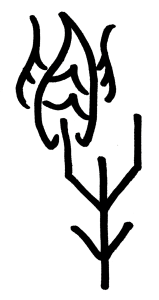Clarity,
Office 17622,
PO Box 6945,
London.
W1A 6US
United Kingdom
Phone/ Voicemail:
+44 (0)20 3287 3053 (UK)
+1 (561) 459-4758 (US).

 The ancient character for jie, the name of Hexagram 40, shows hands with*a knife removing a cow’s horn. Perhaps this has to do with a horn implement for prising knots apart – Chinese boys could carry a knot-horn at their belt when they became men – or perhaps simply with the act of removing the horn, and with it the danger of being gored.
The ancient character for jie, the name of Hexagram 40, shows hands with*a knife removing a cow’s horn. Perhaps this has to do with a horn implement for prising knots apart – Chinese boys could carry a knot-horn at their belt when they became men – or perhaps simply with the act of removing the horn, and with it the danger of being gored.

Oddly enough, in the songs of the Shijing that are more or less contemporary with the Yi, jie is unfailingly a bad thing: it’s what good people and good rulers don’t do, and means being idle. English equivalents might be ‘unwinding’ or ‘slacking off’.
Release’s Shadow – hexagram ‘minus 40’, inverting the whole sequence of hexagrams and counting backwards through them – is 25, Without Entanglement. So in a time of Release you should not think of it in terms of being Without Entanglement, and vice versa – Disentangling is no time to think of Release. That needs a second look,*as on the face of it ‘disentangling’ and release from knots look very similar.
The distinction, I think, is that to be Without Entanglement you disengage. You are to act with ‘uprightness’ in the moment, well-grounded, freely present, but without assuming ownership of events, and especially not of results. 25 can say, ‘Not my business’; 40 must be always re-engaging. 25 might leave the outcome in the lap of the gods; 40 needs to be thinking about whether this is ‘going somewhere’
Clarity,
Office 17622,
PO Box 6945,
London.
W1A 6US
United Kingdom
Phone/ Voicemail:
+44 (0)20 3287 3053 (UK)
+1 (561) 459-4758 (US).